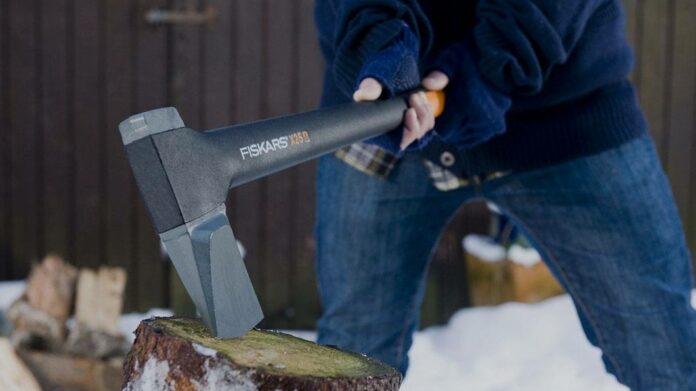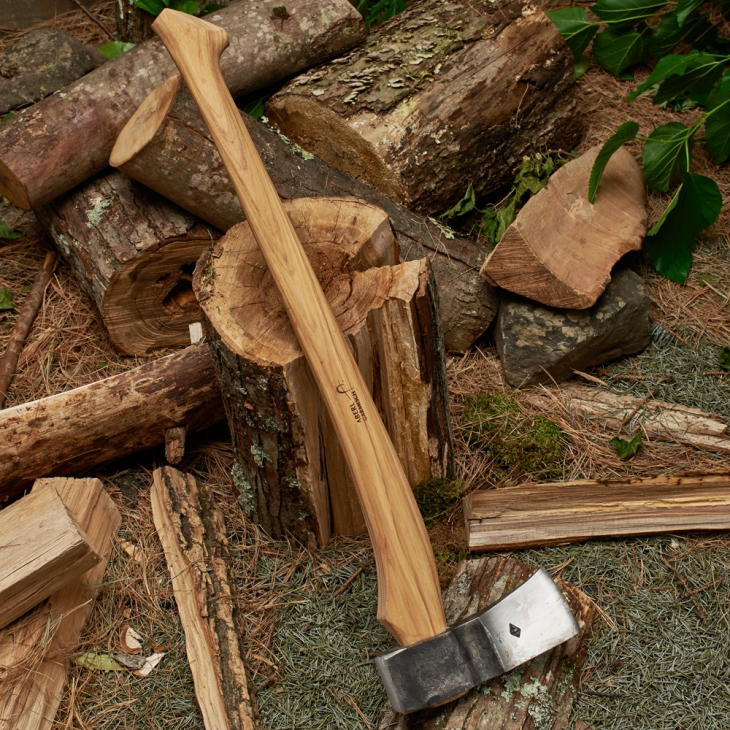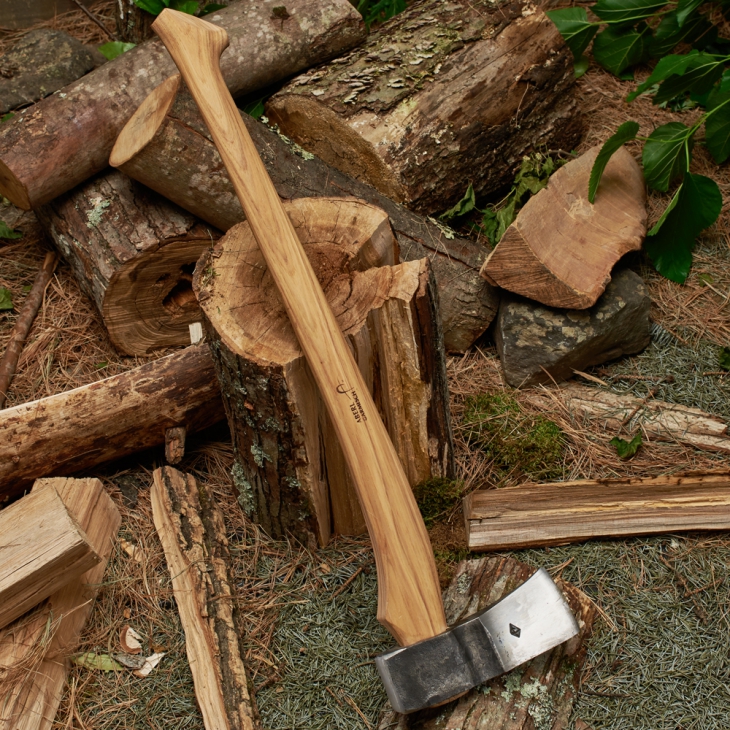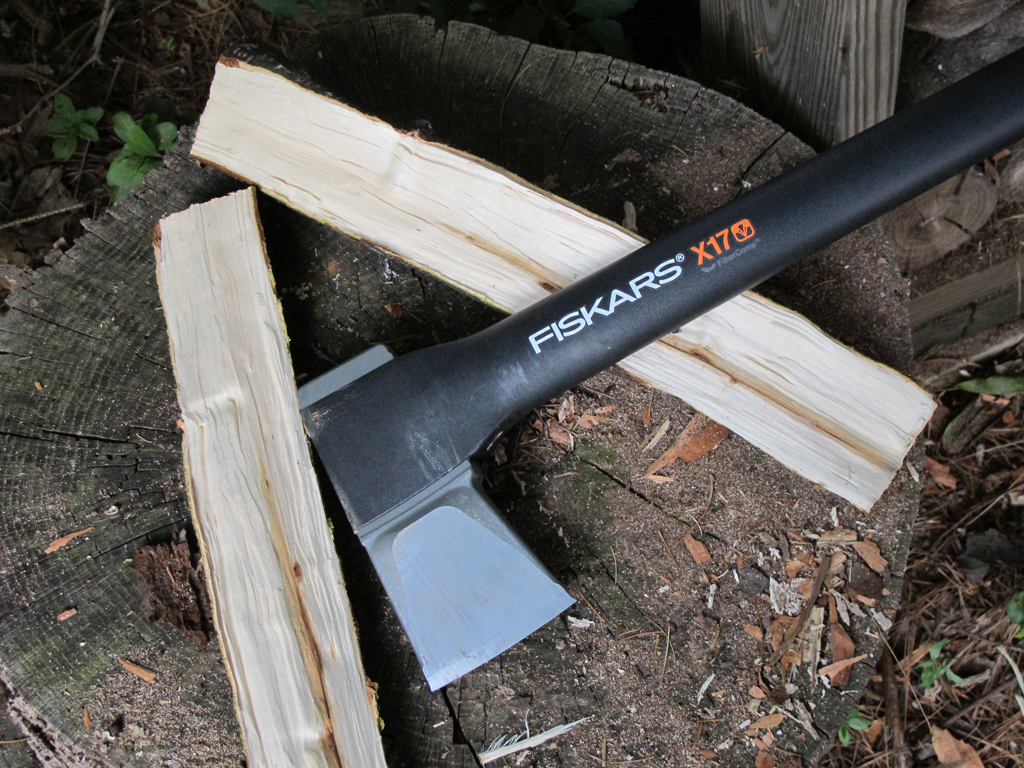Axes come in different types and sizes with each type designed for a specific job. The axe type that we will be discussing today is the splitting axe. The name is pretty self-explanatory as this kind of axe is primarily used for splitting wood instead of cutting them. But how do you determine when is the right time to use a splitting axe for the job? Well, you have come to the right place, logsplitteradvisor.com is here to give you expert advice in this regard.
Splitting Axe and the Splitting Maul
First off, know that there is another variation of the splitting axe called the splitting maul. We will be discussing the difference between the two so that you will get a better grasp and understanding of each axe’s advantages. Always make sure to familiarize yourself with the different parts of an axe and how to use one for everyone’s safety.
The Splitting Axe
The splitting axe is generally lightweight at around 3 to 6 lbs. It features a tapered metallic head which helps in splitting the piece of wood along the grains (vertically). The weight of the head also plays a part when you add the force of the downswing it can generate enough force to cleanly split a block of wood in half.
The Splitting Maul
On the other hand, the splitting maul looks and feels like a sledgehammer. It is heavy, with the maul head weighing in at around 6 to 9 lbs. on its own. The splitting maul handle is also longer compared to the splitting axe. You will also notice that the maul head has a duller blade.
Splitting Axe and Splitting Maul Comparison
Some prefer the splitting axe over the splitting maul and vice versa. Where do you fit between the two groups? Here is a more in-depth look at the differences between the two types of splitting axe to help you figure out your preference.
Overall Weight
Splitting mauls are significantly heavier at 6 to 8 lbs. compared to splitting axe’s weight of 3 to 6 lbs. Splitting axes are designed to be a multi-purpose tool and can prevent fatigue from setting in too quickly. Splitting mauls offer incredible splitting power with every swing but will most likely tire you out faster.
Axe Head
As stated earlier, splitting axe is more versatile with its use thanks to the tapered head design. The blades are also sharper making it a great tool not only for splitting wood but also for cutting. Splitting mauls have a duller blade but are also wider and heavier. This makes the maul a great splitting tool for significantly larger logs of wood. However, splitting maul takes a bit of practice to use efficiently while the splitting axe is designed to be easy to use.
Handle and Material
Splitting mauls use longer handles in order to help it generate the sheer force to split a wooden log in half with one swing. The splitting axe uses a shorter handle so that you can use it in a variety of ways, not just for splitting wood.
As for the material of the handles, splitting mauls usually incorporate fibreglass, plastic, and wood. Splitting axe utilizes either wood or composite materials for its handles.
When to Use the Splitting Axe
There are a couple of factors you need to determine to know whether a splitting axe is the best tool for the job. Ask yourself the following questions:
Do you need to chop or split the wood?
What’s the difference between chopping and splitting wood? Basically, chopping a wood means cutting the log horizontally into several parts. Splitting a wood requires you to cut it in half vertically.
If you are splitting logs of wood in half vertically then the splitting axe is the best tool for the job. As we have discussed earlier, the splitting axe is designed to cut along the grain of the wood. It is also designed to accomplish this in one fell swoop, thanks to the tapered and heavier axe head.
If you will only be splitting small logs then your standard splitting axe will suffice. Smaller splitting axes are also ideal for camping and outdoor trips due to its lightweight and compact design. On the other hand, if you will be splitting larger pieces of logs then you might want to check out bigger splitting axes or maybe even a splitting maul.
Other Factors to Consider When Choosing/Buying an Axe
As with all products, quality and safety should be among your top concerns. This holds significantly more weight with tools like axes as accidents can occur when handling this equipment. The risk of accident can also increase if your axe is made from low-quality material and constructed using sub-par methods.
Most modern axes today use shock-absorbing design and materials. Research the new features synonymous with modern axes and always go for the best quality brands as these ensure safety and longevity of the axe.
Conclusion
There are different types of axes available, each with their own specific uses. A splitting axe is an excellent tool for splitting logs in half vertically as well as cutting wood. However, they are not as effective when it comes to chopping. Understanding this will help you figure out what type of axe to use for a particular job.






















